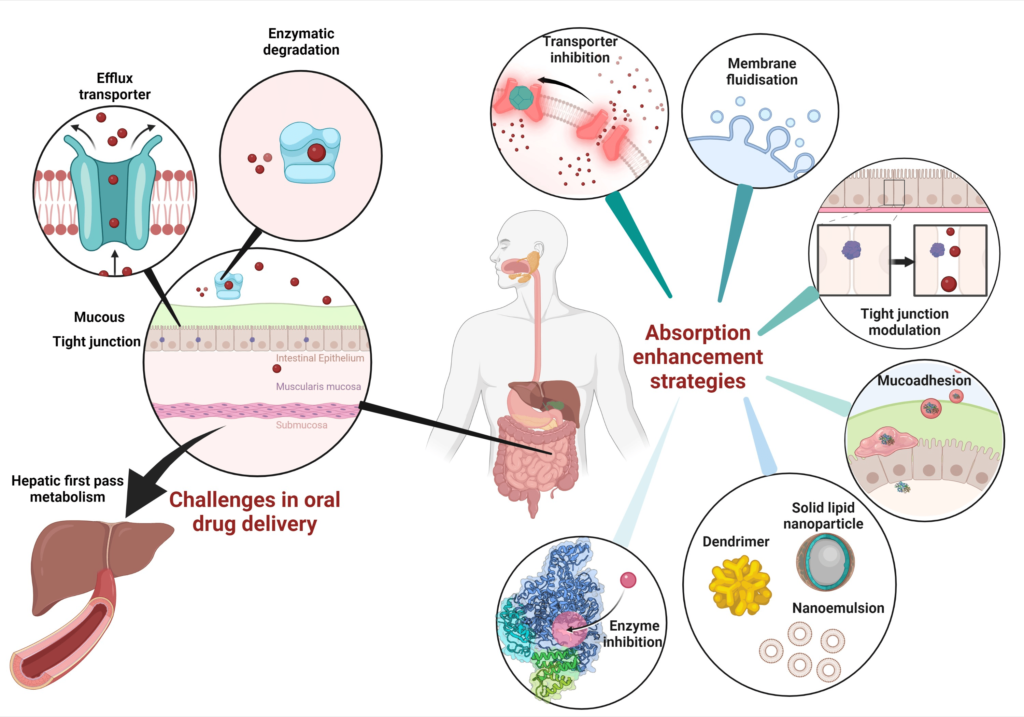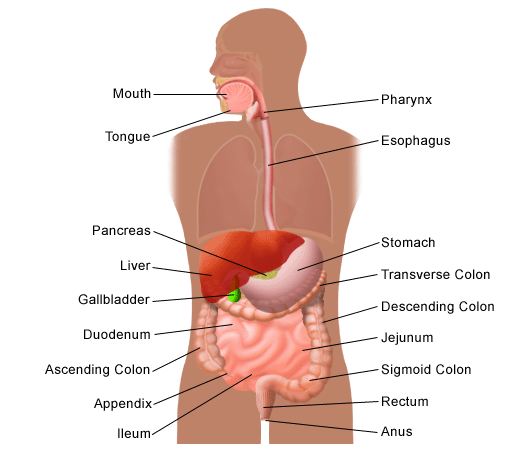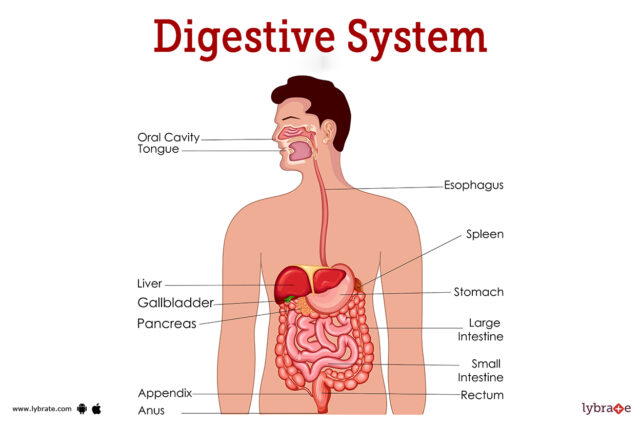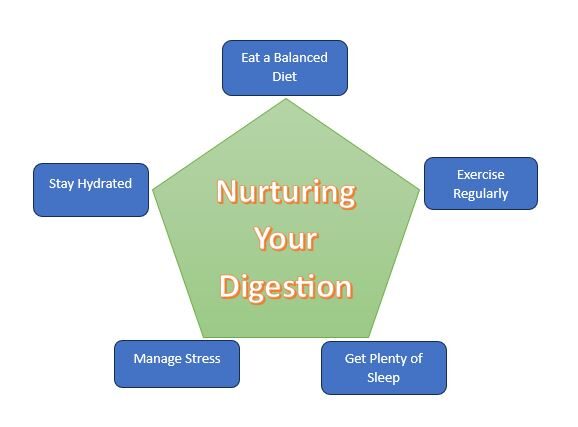“Explore the fascinating journey of digestion in ‘Masticate, Metabolize, Absorb: The Digestive System Uncovered.’ Delve into the essential processes of chewing, breaking down nutrients, and absorbing them into the body. Unravel the complexities of the digestive system, from the initial bite to the final step of excretion. A must-read for anyone curious about how our bodies process and utilize the food we eat for optimal health.”
The Journey Begins: Mastication
Mastication, or chewing, is the first crucial step in the digestive process. It involves the mechanical breakdown of food, making it easier for the body to process. The act of chewing increases the surface area of food, allowing enzymes in saliva to more effectively begin the digestion process.
The Mechanics of Chewing
Chewing, often taken for granted, is a sophisticated and vital process that kick-starts the digestion of food. This mechanical action is more than just grinding food into smaller pieces; it is an orchestrated activity involving teeth, jaw muscles, and saliva, working in harmony to prepare food for its journey through the digestive system.
At the core of mastication is the collaboration between the jaw and teeth. The jaw muscles exert force, allowing the teeth to cut, tear, and grind food into manageable pieces. This not only makes swallowing safer and easier but also increases the surface area of the food, making it more accessible to digestive enzymes.
Teeth are specialized tools in this process, with different types playing distinct roles. Incisors cut, canines tear, and molars grind, ensuring that food is processed thoroughly. This variety in tooth structure is a testament to the complexity of the chewing process and its importance in digestion.
Saliva plays a crucial, yet often overlooked, role in mastication. It is not merely a lubricant; saliva contains enzymes such as amylase, which begins the chemical breakdown of carbohydrates right in the mouth. This enzymatic action is the first step in converting food into a form that can be absorbed and utilized by the body. Moreover, saliva helps in forming a cohesive bolus (a ball of food), making it easier to swallow.
The act of chewing also has a sensory aspect, as it engages taste receptors on the tongue. This sensory feedback is important for enjoying food and can also signal the digestive system to prepare for the incoming nutrients, initiating the release of digestive juices further down the tract.

Saliva’s Secret Role
Saliva is often relegated to the role of a mere mouth moistener or a facilitator of swallowing. However, its contribution to the digestive process is far more significant and intricate. This clear, watery liquid secreted by the salivary glands in our mouth plays a pivotal role in both the mechanical and chemical aspects of digestion, starting the complex process of breaking down food long before it reaches the stomach.
At the forefront of saliva’s contributions is its enzymatic activity. Saliva contains the enzyme amylase, also known as ptyalin, which begins the digestion of carbohydrates right in the mouth. Amylase breaks down starches into maltose and dextrin, simpler sugars that the body can more easily convert into glucose, its primary energy source. This early-stage digestion is crucial, as it not only aids in the efficient absorption of nutrients but also signals the body to prepare for the incoming nutrients, ensuring a more streamlined digestive process.
Beyond its enzymatic functions, saliva also acts as a lubricant, facilitating the smooth passage of food through the esophagus. By moistening food and binding it together into a soft, cohesive bolus, saliva makes swallowing easier and less prone to complications such as choking or blockage. This lubrication is especially important given the varying textures and consistencies of the foods we consume.
Saliva’s role extends to protection as well. It helps neutralize acids in food and drink, which can damage the enamel on teeth and the lining of the mouth and esophagus. Furthermore, it contains antibacterial agents that help control bacterial populations in the mouth, reducing the risk of infections and contributing to overall oral health.
Interestingly, saliva also plays a part in taste and digestion through its solvent properties, dissolving flavor compounds in food to stimulate taste receptors on the tongue. This sensory feedback is not just crucial for the enjoyment of food but also for digestive regulation, as it can influence the secretion of saliva and digestive enzymes based on the taste and composition of the food.

The Path of Digestion
1. The Oral Phase: The Gateway to Digestion
Digestion begins in the mouth, where the act of chewing breaks down food into smaller pieces, making it easier to digest. Saliva, containing the enzyme amylase, starts the chemical breakdown of carbohydrates. The tongue then helps in forming a bolus (a ball of chewed food), which is pushed to the back of the mouth and down the esophagus, initiating the swallow reflex.
2. The Esophagus: The Conduit to the Stomach
Once swallowed, the bolus enters the esophagus, a muscular tube that connects the throat (pharynx) with the stomach. The walls of the esophagus rhythmically contract in waves of motion known as peristalsis, propelling the bolus towards the stomach. A muscular valve, the lower esophageal sphincter, opens to allow food into the stomach and closes to prevent stomach acids from coming back up.
3. The Stomach: Nature’s Blender
In the stomach, food is mixed with gastric juices, turning it into a semi-liquid substance called chyme. The stomach’s acidic environment helps break down proteins and kill potential pathogens in food. Gastric lipase begins the digestion of fats, and intrinsic factor is secreted to aid in vitamin B12 absorption. Periodic contractions of the stomach’s muscular walls ensure thorough mixing and grinding.
4. The Small Intestine: The Absorption Hub
Chyme then moves into the small intestine, the primary site of nutrient absorption. The small intestine is divided into three sections: the duodenum, jejunum, and ileum. Here, with the help of enzymes from the pancreas and bile from the liver, the final breakdown of proteins, carbohydrates, and fats occurs. The small intestine’s lining, covered in tiny hair-like projections called villi, facilitates the absorption of nutrients into the bloodstream.
5. The Large Intestine: Water Recycling and Waste Formation
What remains—indigestible fiber and water—passes into the large intestine (colon). The large intestine absorbs water and electrolytes, transforming the waste from liquid to solid form, known as feces. Beneficial bacteria in the colon help break down remaining nutrients and produce vitamin K and certain B vitamins.
6. The End of the Line: Excretion
Finally, feces are stored in the rectum until they are expelled through the anus during defecation, marking the end of the digestive process.
This comprehensive journey from ingestion to excretion showcases the body’s incredible efficiency in ensuring that no nutrient goes to waste. The path of digestion is a testament to the intricate design of the human body, a system that supports our well-being with every meal we consume.
The Stomach’s Crucible
1. Mechanical Digestion: The Churning Motion
Upon entering the stomach, food encounters the organ’s powerful muscular walls, which contract rhythmically in a process known as peristalsis. These contractions serve a dual purpose: they physically mash the food, enhancing its breakdown, and they also ensure that the food is thoroughly mixed with gastric juices. This churning action is akin to a blender, turning solid food into chyme, preparing it for the next stage of digestion in the small intestine.
2. Chemical Digestion: Gastric Juices and Enzymes
The stomach secretes gastric juices, a potent cocktail of hydrochloric acid (HCl), enzymes, and mucus. Hydrochloric acid creates an extremely acidic environment (with a pH around 2), which serves several purposes: it denatures proteins, making them easier for enzymes to break down; it activates pepsinogen into pepsin, an enzyme that begins protein digestion; and it helps kill bacteria and other pathogens that may have been ingested with the food.
Pepsin, the main digestive enzyme in the stomach, breaks down proteins into smaller peptides. This enzyme is most effective in the acidic environment provided by HCl. The stomach’s lining also secretes mucus to protect itself from the corrosive effects of the acid and enzymes, ensuring that the organ is not digested by the very substances it produces.
3. The Role of the Stomach in Food Storage
Another critical function of the stomach is its role as a food storage tank. It can expand significantly to accommodate large meals, releasing small, controlled amounts of chyme into the small intestine for further digestion and absorption. This capacity allows the digestive system to efficiently handle varying amounts of food intake.
4. Hormonal and Neural Regulation
The stomach’s activity is finely tuned by the nervous system and various hormones. Gastrin, a hormone released by the stomach in response to the presence of food and neural signals, stimulates the secretion of gastric juices. The nervous system also plays a role, with the sight, smell, or even thought of food triggering the stomach to prepare for digestion.
5. The Role of the Stomach in Nutrient Absorption
While the stomach is primarily known for its role in breaking down food, it does absorb some substances directly through its lining, such as alcohol and certain medications. This absorption demonstrates the stomach’s permeability to small molecules, which can have both beneficial and adverse effects.
The Metabolic Process
1. From Digestion to Absorption
The journey begins in the digestive system, where food is broken down into its component nutrients: carbohydrates into simple sugars, proteins into amino acids, and fats into fatty acids and glycerol. This breakdown, initiated in the mouth and stomach, continues in the small intestine, where the majority of nutrient absorption occurs. The walls of the small intestine, lined with villi and microvilli, significantly increase its surface area, facilitating the absorption of nutrients into the bloodstream.
2. The Role of the Liver in Metabolism
Once absorbed, nutrients are transported to the liver, the central hub of metabolic activity. The liver has several critical roles in metabolism: it detoxifies harmful substances, stores certain nutrients, and converts different nutrients into usable forms. For instance, it can convert excess glucose into glycogen for storage and later convert it back into glucose when energy is needed. It also plays a crucial role in lipid metabolism, synthesizing cholesterol and lipoproteins.
3. Energy Production: Cellular Respiration
The cornerstone of the metabolic process is the production of ATP (adenosine triphosphate), the energy currency of the cell. This process, known as cellular respiration, occurs in the mitochondria of cells and involves three main stages: glycolysis, the Krebs cycle (or citric acid cycle), and oxidative phosphorylation. Through these stages, the energy stored in nutrients is converted into ATP, which powers virtually all cellular activities.
4. Metabolic Pathways: Anabolism and Catabolism
The metabolic process is divided into two main pathways: anabolism (building up) and catabolism (breaking down). Anabolic processes use energy to synthesize complex molecules from simpler ones, such as the synthesis of proteins from amino acids. Catabolic processes, on the other hand, break down complex molecules into simpler ones, releasing energy in the process. These pathways are regulated by hormones and the body’s energy needs, ensuring a balance between energy production and consumption.
5. The Impact of Diet and Exercise on Metabolism
Diet and exercise play pivotal roles in influencing our metabolic rate, the speed at which these processes occur. A balanced diet provides the necessary nutrients for efficient metabolic activity, while regular exercise boosts the metabolic rate, increasing energy expenditure and promoting the building of muscle mass, which in itself burns more calories than fat tissue.
6. Metabolism and Overall Health
The metabolic process is not just about converting food into energy; it’s also crucial for maintaining overall health. Metabolic disorders, such as diabetes and hyperthyroidism, can disrupt this balance, leading to serious health issues. Thus, understanding and maintaining a healthy metabolic rate through diet and lifestyle choices is essential for long-term health and well-being.
Absorption and Beyond
1. Nutrient Absorption in the Small Intestine
The primary site for the absorption of nutrients is the small intestine. Its lining, intricately folded into villi and microvilli, exponentially increases the surface area, facilitating efficient nutrient uptake into the bloodstream. Carbohydrates, now broken down into simple sugars, proteins into amino acids, and fats into fatty acids and glycerol, are readily absorbed through the intestinal walls.
2. The Role of the Large Intestine
Beyond nutrient absorption, the digestive journey continues into the large intestine or colon. While its role in nutrient uptake is minimal, the large intestine performs critical functions in water and electrolyte absorption. This process is vital for maintaining the body’s fluid and electrolyte balance. The large intestine also houses a vast colony of beneficial bacteria that further break down waste materials, synthesize certain vitamins like vitamin K and B vitamins, and form an essential component of the fecal matter to be excreted.
3. Transport and Utilization of Nutrients
Once absorbed, nutrients are transported via the bloodstream to the liver, which regulates their distribution and metabolism. For instance, glucose can be used immediately for energy or stored as glycogen for future use. Amino acids may be utilized for protein synthesis, vital for growth, repair, and maintenance of body tissues. Fatty acids are either used as a direct energy source or stored in adipose tissue as triglycerides.
4. The Detoxification Process
The liver also plays a crucial role in detoxifying the blood, breaking down toxins and waste products from metabolism for elimination. This detoxification ensures that harmful substances are rendered harmless and excreted from the body, maintaining internal health and preventing damage to cells and tissues.
5. Excretion: The Final Step
The final step in the digestive process is excretion, the body’s way of eliminating waste. Solid waste, now devoid of most nutrients and concentrated in the large intestine, is expelled through the rectum during defecation. Meanwhile, the kidneys filter out waste products from the blood, such as urea and creatinine, excreting them in the urine. This process of excretion is essential for maintaining the body’s internal equilibrium and preventing the accumulation of harmful substances.
6. The Impact of Diet on Absorption and Metabolism
The efficiency of absorption and subsequent metabolic processes is significantly influenced by one’s diet. A balanced diet rich in fiber, vitamins, minerals, and other essential nutrients facilitates optimal absorption and utilization, supporting overall health and well-being. Conversely, a diet lacking in essential nutrients can impair these processes, leading to nutritional deficiencies and associated health issues.
The End of the Line: Excretion
1. Kidneys: The Filtration Powerhouses
The kidneys are perhaps the most recognized organs of excretion, acting as the body’s natural filtration system. They meticulously cleanse the blood of waste products, like urea and creatinine, byproducts of protein metabolism, and excess salts, water, and other substances. This filtration process results in the production of urine, which is stored in the bladder before being expelled from the body through the process of urination. The kidneys’ ability to adjust the composition of urine is vital for balancing the body’s fluids and electrolytes, showcasing their critical role in homeostasis.
2. Liver: The Metabolic Processor
The liver’s contribution to excretion is primarily through its role in detoxification and metabolism. It processes and breaks down toxins, hormones, drugs, and other substances in the blood, rendering them harmless or converting them into forms that can be easily eliminated from the body. For instance, the liver converts ammonia, a toxic byproduct of protein metabolism, into urea, which is then excreted by the kidneys. Additionally, the liver produces bile, aiding in the digestion and absorption of fats and facilitating the excretion of cholesterol and other waste products through the feces.
3. Lungs: Exhaling Wastes
The lungs, while primarily associated with respiration, also play a significant role in excretion by expelling carbon dioxide, a waste product of cellular respiration. Through the process of exhalation, the lungs ensure that this potentially harmful gas is removed from the bloodstream, maintaining the body’s pH balance and preventing acidosis.
4. Skin: The Sweat Glands’ Role
The skin contributes to excretion through the sweat glands, which release sweat composed of water, salts, and small amounts of urea and lactate. Sweating not only helps regulate body temperature but also aids in the removal of excess salts and minor waste products, highlighting the skin’s role in both thermoregulation and excretion.
5. The Digestive Tract: Final Waste Removal
The digestive tract completes the excretion process by eliminating indigestible food residue, dead cells shed from the lining of the gastrointestinal tract, and other waste products not absorbed during digestion. This material is formed into feces, which are stored in the rectum until they are expelled from the body through defecation. This final step in excretion is crucial for clearing the body of solid waste and preventing the accumulation of harmful substances.
Conclusion
Understanding the digestive process is crucial for maintaining health and well-being. A balanced diet tailored to support the digestive system can lead to improved health outcomes and a better quality of life.
FAQs
- What role does chewing play in digestion? Chewing increases the surface area of food, making it easier for enzymes to break it down.
- How does the stomach contribute to digestion? The stomach mixes food with gastric juices to create chyme, further breaking down the food.
- What is the primary site of nutrient absorption? The small intestine is where most nutrient absorption occurs.
- How can diet affect digestion? A balanced diet promotes efficient digestion, while certain foods can hinder the process.
- What is the final step in the digestive process? The excretion of waste is the final step, crucial for removing indigestible materials from the body.



MOST COMMENTED
Animal-Based Proteins / Casein Protein / Dietary Protein / High-Protein Diets / Pea Protein / Plant-Based Proteins / Protein / Protein Deficiency / Protein Supplements / Proteins / Whey Protein / Whey Proteins
Is Protein Powder Safe for Teenagers and Children?
Animal-Based Proteins / Casein Protein / Dietary Protein / High-Protein Diets / Pea Protein / Plant-Based Proteins / Protein / Protein Deficiency / Protein Supplements / Proteins / Whey Protein / Whey Proteins
Unlock the Power of Proteins for Optimal Gut Health
Multivitamin
Total Health: Multivitamin for Active Lifestyles
Multivitamin
WellnessFusion: Complete Multivitamin Support
Dietary Supplement
Revitalize Your Health: The Magic of Red Yeast Rice Capsules
Foot care / Foot Health
Revitalize Your Foot Care Routine: Essential Tips for Optimal Foot Health
Foot Problem / Diabetics / Foot Health
Diabetics: Mastering Footwear Selection for Enhanced Foot Health and Ultimate Comfort
Exercises and Footwear Tips for Hammertoe Relief / Foot care / Foot Health / Foot Pain / Foot Problem / Hammertoes
Unlock Effective Exercises and Footwear Tips for Hammertoe Relief
Hammertoes / Foot Health / Foot Pain / Foot Problem
Unlock Relief: Essential Guide to Hammertoes Causes, Symptoms, and Treatments
Foot Problem / Foot Health
Revolutionize Your Recovery: Natural Remedies for Plantar Fasciitis – Fresh Home Keepers